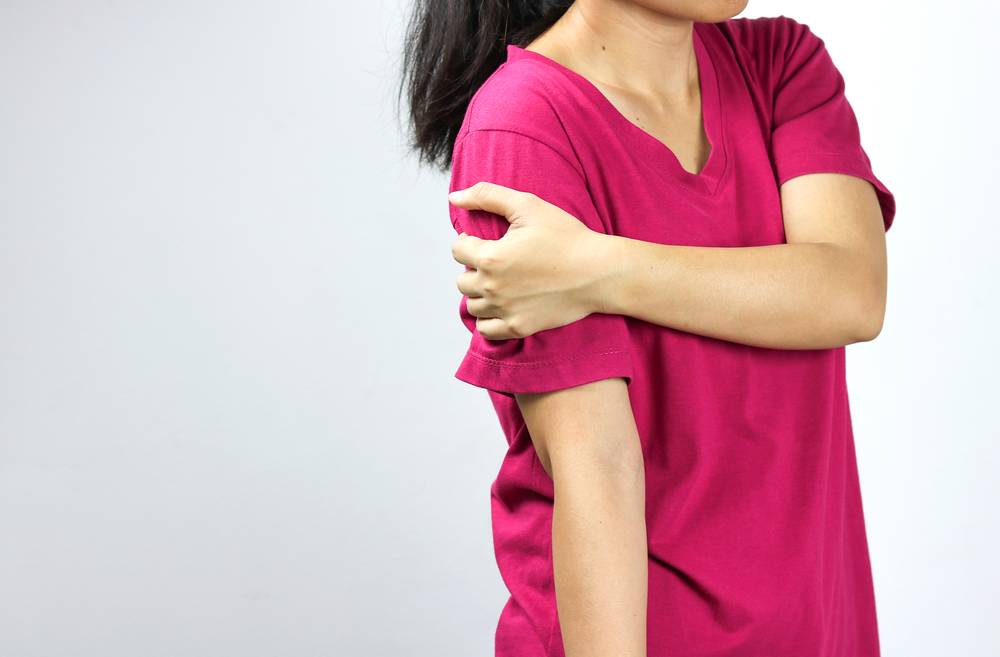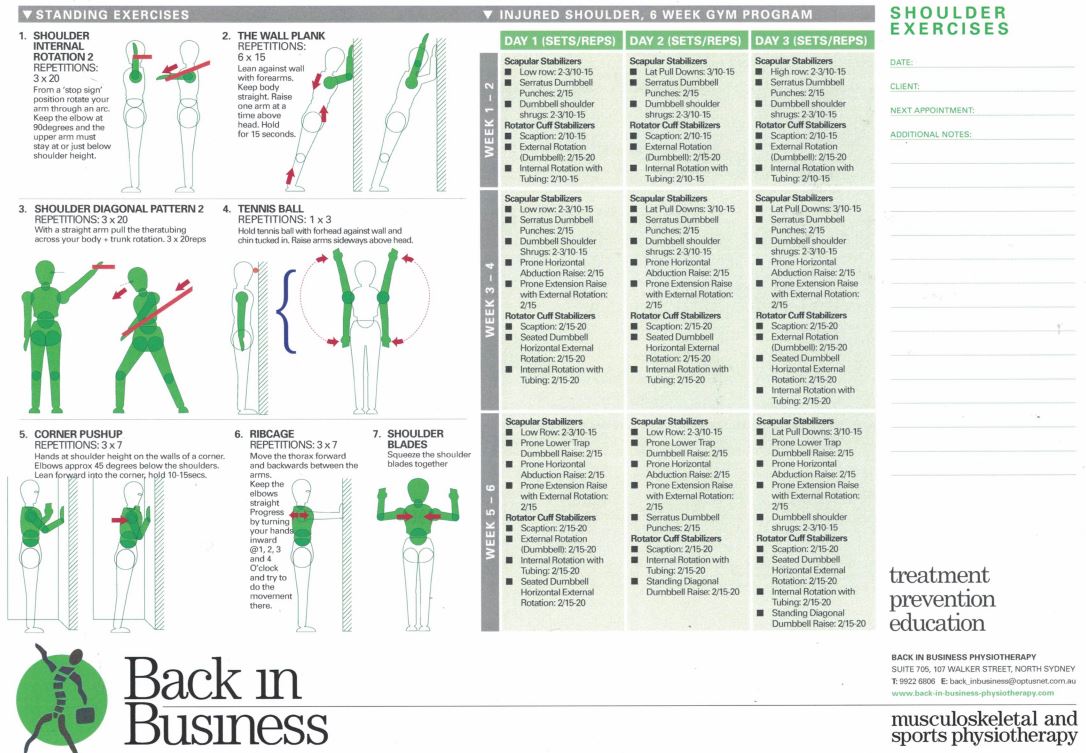Injury blog: Shoulder impingement
Do you have shoulder pain? Are you an office worker, professional athlete, hairdresser or full-time parent? These are just some of the types of people we see in the clinic who need help with shoulder pain. One of the most common complaints we treat here, at Back in Business Physio-therapy, is shoulder ‘impingement’ (aka subacromial impingement). “What is impingement?” we hear you ask. Read on to find out.

Anatomy overview
The shoulder is a pretty complex region of the body when it comes to anatomy and how it all works together to allow us to move. The connections between the arm bone ( humerus), collar bone ( clavicl’), shoulder blade ( scapula) and the rib cage, provide us with the perfect base for a limb that is able to move through an extremely wide range of motion… The most movement out of any other joint in the body. Having lots of movement is great because it means we can do lots of wonderful things like reach the back of our head to wash our hair and reach our backs too (like when tying an apron). In order to achieve this level of movement the shoulder has to be less sta-ble, and this leaves it prone to injury.
The arm bone and shoulder blade form the ‘ball and socket’ part of the shoulder, where a large amount of the movement takes place. The ligaments between these bones are quite loose and a group of muscles, known as the ‘rotator cuff’ muscles, help to keep the ‘ball’ of the arm bone posi-tioned correctly over the ‘socket’ of the shoulder blade, as well as aid with certain movements, including rotation or turning of the arm.
Small spaces…
Over the top of the ball and socket joint sits the ‘acromion’, which is a bony prominence of the shoulder blade which creates a roof over the joint. Between the top of the ball and the bottom of the acromion is a small space known as the ‘subacromial space’. Some tendons of the arm mus-cles that create movement of the shoulder pass through this space on their way to their attach-ment site on the bones. There is also a ‘bursa’, which is a small sac of fluid which helps to keep movements around joints smooth and frictionless. There is quite a lot of tissue all crammed into one small space, and this is an important factor in the development of impingement.
Causes
Common causes of shoulder impingement include:
• Repetitive overarm throwing or other above-shoulder movements
• Long-standing poor posture or poor movement patterns
• De-conditioned or weak shoulder muscles from leading a sedentary lifestyle
• Heavy lifting
Anything that leads to the structures which pass through the subacromial space becoming irritat-ed and inflamed can cause impingement-related pain. Inflammation can lead to swelling of the tissues in the small space and when we move our arm up or out to the side, these tissues get pinched between the bones, and we feel pain. Any of the above-mentioned structures can be-come inflamed, but there is rarely just one tissue solely responsible. If the tendon of a rotator cuff muscle is inflamed, there is every chance the bursa will also be inflamed.
Signs and symptoms
Signs and symptoms of shoulder impingement include:
• Pain with arm movements (particularly movement in front and out to the side of the body)
• Pain with shoulder rotation
• Pain that radiates down the outside of the upper arm
• Reduced shoulder range of motion
Treatment
At the root of most cases of shoulder impingement is poor and inefficient shoulder movement. When you come to see us for treatment, we will look beyond the shoulder to other areas of the body, like the spine. The neck and mid-back areas of the spine are regularly restricted and need some help to move well again. Once the spine moves well, shoulder function improves too.
The shoulder blade also needs to sit correctly over the rib cage in order for the ball and socket joint (and other joints) to work efficiently. Weakness of the muscles which stabilise the shoulder blade on the rib cage can lead to poor positioning of the blade during movement, so we will aim to improve this by giving you focused strengthening and stability exercises. A solid base = good, smooth movement.
Through a combination of us using our hand techniques (like massage and joint mobilisation), progressive exercises and lifestyle changes, you can expect to see positive changes quite quick-ly. The end goal of ensuring your pain doesn’t return is always a lengthier process and requires dedication from yourself (and us) to make sure the changes we make early on stay in place for time to come. We are here to help you every step of the way.
Shoulder pain? Call us today on 02 9922 6806
References
1. Brukner, P. et al. 2017. Clinical Sports Medicine. 5th ed. Australia: McGraw Hill Education
2. Gilroy, A. et al. 2012. Atlas of Anatomy. 2nd ed. Stuttgart: Thieme
Links
- Rock Climbing and Shoulder Mechanics : https://www.back-in-business-physiotherapy.com/latest-news/305-rock-climbing.html
- Shoulder Stabilioty : https://www.back-in-business-physiotherapy.com/joint-stability-sp-161372761.html
- Shoulder Problems : https://www.back-in-business-physiotherapy.com/we-treat/shoulder-problems.html
Uploaded : 29 June 2021
Updated :7 April 2022






